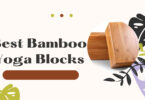What do you consider while buying a yoga mat?
If you are like most yoga practitioners, you are likely to look for the style, brand, and texture of a yoga mat, right? But how thick should your yoga mat be? While there are plenty of styles and brands to choose from, the thickness of the mat is often overlooked by most people (especially beginners).
It is the thickness of your yoga mat that determines how well you can stand, maintain balance or stay comfortable. For example, if you have sensitive knees, a thick yoga mat will ensure more comfort during kneeling and grounding poses. While a thicker yoga mat ensures more cushioning and comfort for knees and joints, it can be more challenging to balance on during standing yoga posture like the Mountain Pose. Thinner yoga mats, on the other hand, are lightweight but they are not that comfortable for kneeling or grounding yoga poses.
The point here is that both thick and thin yoga mats have their pros and cons. Generally, the thickness of yoga mats ranges from 1 mm to 7 mm. Here, we will talk about the 3mm and 5mm yoga mats since they are the most commonly used mats. The key difference between these two yoga mats is the thickness itself. The 5 mm is almost twice thicker than the 3 mm mat. In this article, we will understand the characteristics of both mats to help you choose the right one for your yoga practice.
What is a 3 mm Yoga Mat?
Yoga mats with 3mm thickness are the commonly used type. They are offered by nearly all yoga mat brands.
The 3mm is so versatile that it supports all types of yoga, including standing poses and balancing poses, especially if you want to feel the floor. Since it is thinner than the 5mm mat, it is suitable for learning the balancing asana. As an added bonus, the mat is lightweight and can be easily carried around.
But it also comes with a downside. The 3mm yoga mat doesn’t offer good cushioning, which means that yogis with bad knees or sensitive joints should avoid this mat.
What is a 5 mm Yoga Mat?
A 5 mm yoga mat is thicker than its 3 mm equivalent, offering more cushion to your sensitive joints, back, knees and hips.
Two further benefits of a 5mm mat are: it is both reasonable and lighter than its 6 mm counterpart, and it is great for restorative classes, meditation, yin classes, and seated yoga postures.
To simply put it, the 5mm yoga mat is an ideal mat thickness for yoga poses that requires a lot of kneeling and sitting. But since the mat has a lot of cushioning, it might not offer good support to your standing or balancing poses. You might feel as if you are sinking into it while standing on it.
What to Choose–3 mm or 5 mm Yoga Mat?
Should you buy a 3 mm yoga mat or a 5 mm yoga mat? It purely depends on your comfort and the yoga poses you are likely to do the most.
The equation is pretty simple here—the 3mm yoga mat is ideal for those who practice a lot of balancing and standing asana because it is thinner and can support your balance and stability. The 5 mm yoga mat is highly recommended for practitioners with sensitive knees or joint issues or those who perform a lot of sitting postures, thanks to the cushion it offers. It only depends on what works best for you.
Other Key Factors to Choose the Right Yoga Mat
Now that you must have understood the difference between a 5 mm yoga mat and a 3mm yoga mat, it will go a long way if you also consider the other factors while buying a yoga mat. Apart from thickness, there are several other factors to keep in mind while buying the right yoga mat.
The Material of Your Yoga Mat
The material is a key factor to consider when it comes to buying a yoga mat. It determines the comfort, price, grip, weight, and durability.
From PVC to rubber and cork, yoga mats are available in various materials to choose from, each having its pros and cons. PVC, for example, is durable and easy to clean, but excessive sweat can make it slippery. Rubber yoga mats are durable, non-toxic, and biodegradable alternative to PVC. However, they can pose grip issues for certain poses like front splits. Avoid natural rubber mats if you are allergic to latex. Cork is known for its durability, cushion, and grip.
The Texture of Your Yoga Mat
Make sure to ponder over the texture of your yoga mat as it determines the overall grip and comfort of the mat. It impacts the degree of traction ensured by the mat during your practice.
The texture of PVC mats makes them enough “sticky” to keep you from sliding and helps you with alignment. This way, you can hold your yoga poses longer.
The Eco-Friendliness of Your Yoga Mat
Frankly speaking, the eco-friendliness factor has nothing to do with the performance of your yoga mat. But yoga also teaches us the art of living harmoniously with mother nature.
That’s why you will have to think if you need a yoga mat that can clog a landfill or pollute the water bodies for years. Choose eco-friendly yoga mats that are made from recycled or natural rubber. These yoga mats also include organic materials such as cotton or jute.
The Price Range of Your Yoga Mat
A 1/8-inch-thick, basic-colored PVC sticky mats are a cost-friendly option. Expect to pay more for more thickness, stylish designs, raised patterns, and antimicrobial treatments.
Above all, a famous brand can cost you thrice the price of a simple yoga mat. But it is not necessary to fork out a lot of money to buy a branded yoga mat if a good basic sticky mat can do the trick.
Conclusion
I hope that you understood the differences between 3 mm and 5 mm yoga mats as well as the other factors to consider while buying a yoga mat. Look for a yoga mat that is not only comfortable but also supports your certain yoga practices.







